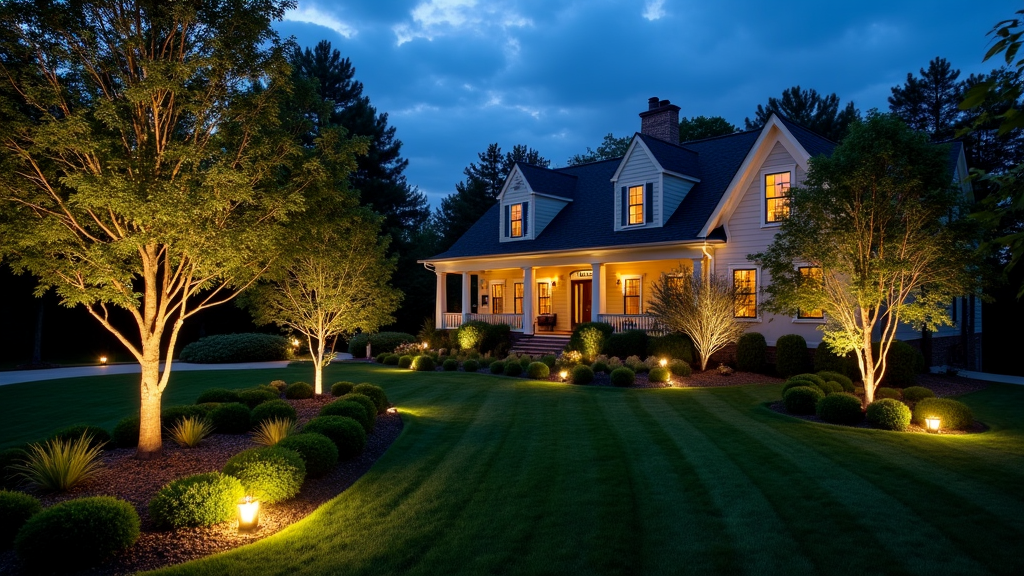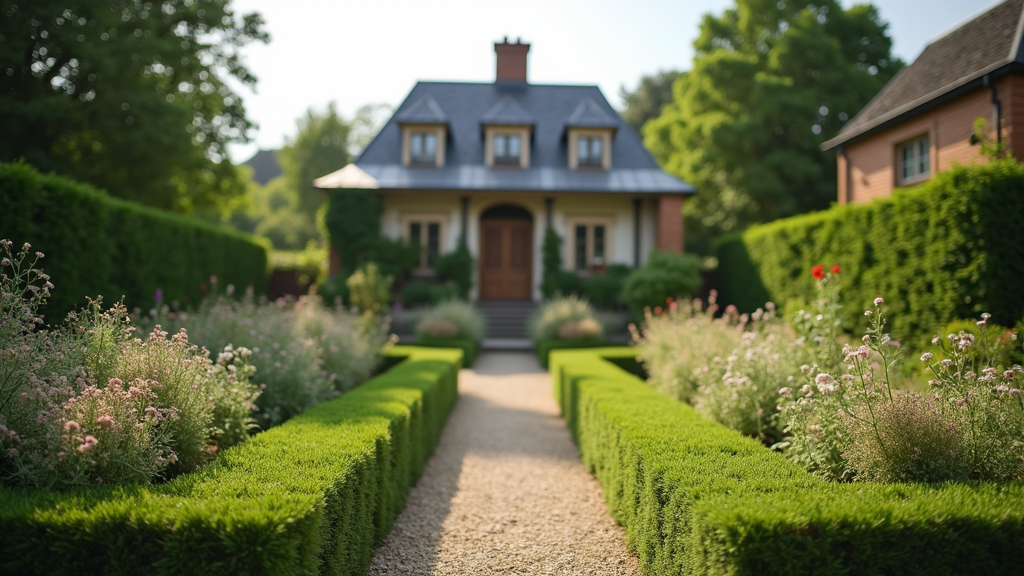Introduction
In a world increasingly aware of environmental challenges, many people are turning to eco-friendly practices in their gardening and landscaping endeavors. North Carolina, with its diverse climate and rich natural beauty, offers the perfect backdrop for creating stunning landscapes that are as sustainable as they are beautiful. This comprehensive guide aims to empower gardeners and homeowners alike with the knowledge they need to design an environmentally friendly landscape that thrives in harmony with nature.
Whether you're starting from scratch or looking to improve your existing garden, this guide will cover everything from selecting native plants to implementing water conservation techniques. So roll up your sleeves, grab your gardening gloves, and let's dig into The Eco-Friendly Gardener’s Guide to Landscaping in North Carolina!
Understanding Landscape Design
What is Landscape Design?
Landscape design is more than just planting flowers and trees; it involves creating a cohesive outdoor space that enhances the natural surroundings while meeting the functional needs of the users. At its core, effective landscape design integrates aesthetics, functionality, and sustainability.
Key Elements of Landscape Design
Plants: Selection of flora based on color, texture, and growth habit. Hardscapes: Non-plant elements like pathways, patios, and decks. Water Features: Ponds or fountains that can enhance beauty and attract wildlife. Lighting: Proper illumination for safety and ambiance. Soil & Drainage: Understanding soil types for optimal plant health.The Importance of Sustainable Practices
Sustainability is at the heart of eco-friendly landscaping. Practices like composting, xeriscaping (designing landscapes to reduce irrigation), and using organic fertilizers can significantly reduce environmental impact.
The Benefits of Eco-Friendly Landscaping in North Carolina
Conservation of Resources
By utilizing native plants that require less water and fertilizer, you conserve precious resources while still achieving a vibrant landscape.
Enhancing Biodiversity
Native plants provide habitats for local wildlife such as birds, butterflies, and beneficial insects, which play vital roles in pollination and pest control.
Improving Soil Health
Organic gardening practices enhance soil structure and fertility without harmful chemicals.
Reducing Carbon Footprint
Sustainable landscaping practices contribute to carbon sequestration by increasing greenery which absorbs CO2 from the atmosphere.
Selecting Native Plants for Your Landscape
Why Choose Native Plants?
Native plants are adapted to local climates and soil conditions; hence they require less maintenance compared to non-native species. They also support local ecosystems more effectively by providing food and shelter for native wildlife.
Top Native Plants for North Carolina
- Eastern Redbud ( Cercis canadensis): A small tree known for its stunning pink blossoms. Bee Balm ( Monarda didyma): A perennial favorite among bees and hummingbirds. Black-eyed Susan ( Rudbeckia hirta): Bright yellow flowers that thrive in various conditions. Southern Magnolia ( Magnolia grandiflora): An iconic tree with fragrant white flowers.
Creating a Diverse Plant Palette
A well-rounded landscape should include a variety of plant species—trees, shrubs, perennials, and annuals—to ensure year-round interest while supporting diverse wildlife populations.
Implementing Water Conservation Techniques
Rainwater Harvesting Systems
Collecting rainwater through barrels or cisterns not only conserves water but can also be used efficiently during dry spells.
1. How does rainwater harvesting work?
Rainwater is collected from roofs or surfaces into storage containers where it's filtered before use in irrigation or other non-potable applications.
2. What are the benefits?
Not only do you save on utility bills by using harvested rainwater for irrigation, but you also reduce stormwater runoff—a major contributor to water pollution!
Drip Irrigation Systems
Drip systems deliver water directly to plant roots via tubing or hoses, minimizing evaporation loss while ensuring efficient water delivery.
1. What makes drip systems eco-friendly?
These systems use significantly less water compared to traditional sprinklers by targeting only the areas needing moisture.
Soil Improvement Strategies for Sustainable Gardening
Testing Your Soil pH Levels
Understanding your soil's pH level is essential as it affects nutrient availability for plants. Home testing kits are readily available at garden centers or extension offices throughout North Carolina.
Utilizing Organic Matter
Incorporating organic materials like compost or well-rotted manure enriches soil structure while boosting nutrient content naturally:
| Amendment | Benefits | |-------------------|-----------------------------------------------| | Compost | Adds nutrients & improves drainage | | Mulch | Reduces weeds & retains moisture | | Cover Crops | Prevents erosion & adds organic matter |
Creating Functional Outdoor Spaces
Designing Patios & Walkways
Incorporate permeable materials such as gravel or porous pavers to promote groundwater recharge while adding aesthetic appeal.
1. What are the advantages?
Permeable surfaces reduce runoff by allowing rainwater infiltration—an essential aspect of sustainable landscaping!
Integrating Edible Gardens into Your Landscape Design
1. Why Grow Edibles?
Growing fruits and vegetables not only provides fresh produce but enhances biodiversity by attracting beneficial pollinators like bees!
2. Planning Your Edible Garden
Consider companion planting strategies—certain plants grow better together—while also incorporating vertical gardening techniques where space is limited.


FAQ Section
1. What types of mulch are best for eco-friendly landscaping? Organic mulches like wood chips or straw break down over time enriching soil quality without introducing harmful chemicals present in synthetic options.
2. Can I have a lawn that's eco-friendly? Absolutely! Consider alternatives such as clover lawns which require less mowing/fertilization compared with traditional grass varieties!
3. What's xeriscaping? Xeriscaping focuses on reducing water usage through drought-resistant plants while promoting efficient irrigation methods—a great fit for North Carolina's drier spells!
4. Are there any grants available for sustainable landscaping projects in NC? Yes! http://caidenzboc102.theglensecret.com/creating-outdoor-living-spaces-landscaping-ideas-for-stokesdale Various programs exist through state agencies aimed at promoting conservation efforts; check local extension offices or government websites for details.
5. How can I attract pollinators into my garden? Plant a varied selection of nectar-rich flowers alongside nesting sites (like bee hotels) tailored specifically toward local pollinator species—increasing both beauty & biodiversity!
6. Is it necessary to use chemical fertilizers? Not at all! Organic fertilizers derived from natural sources offer an effective way to nourish your garden without contributing harmful chemicals into our waterways.
Conclusion
Landscaping doesn't have to come at the expense of our environment—especially here in beautiful North Carolina! By embracing sustainable practices outlined within this guide—from selecting native plants suited for our region's climate through innovative watering techniques—we can create stunning outdoor spaces filled with life while preserving nature’s integrity every step along the way!
In short: let’s cultivate landscapes that not only look good but feel good too—because when we care about our earth today; we ensure a greener tomorrow! Thank you for joining us on this journey into eco-friendly gardening as part of The Eco-Friendly Gardener’s Guide to Landscaping in North Carolina!